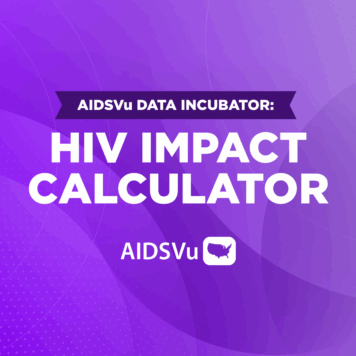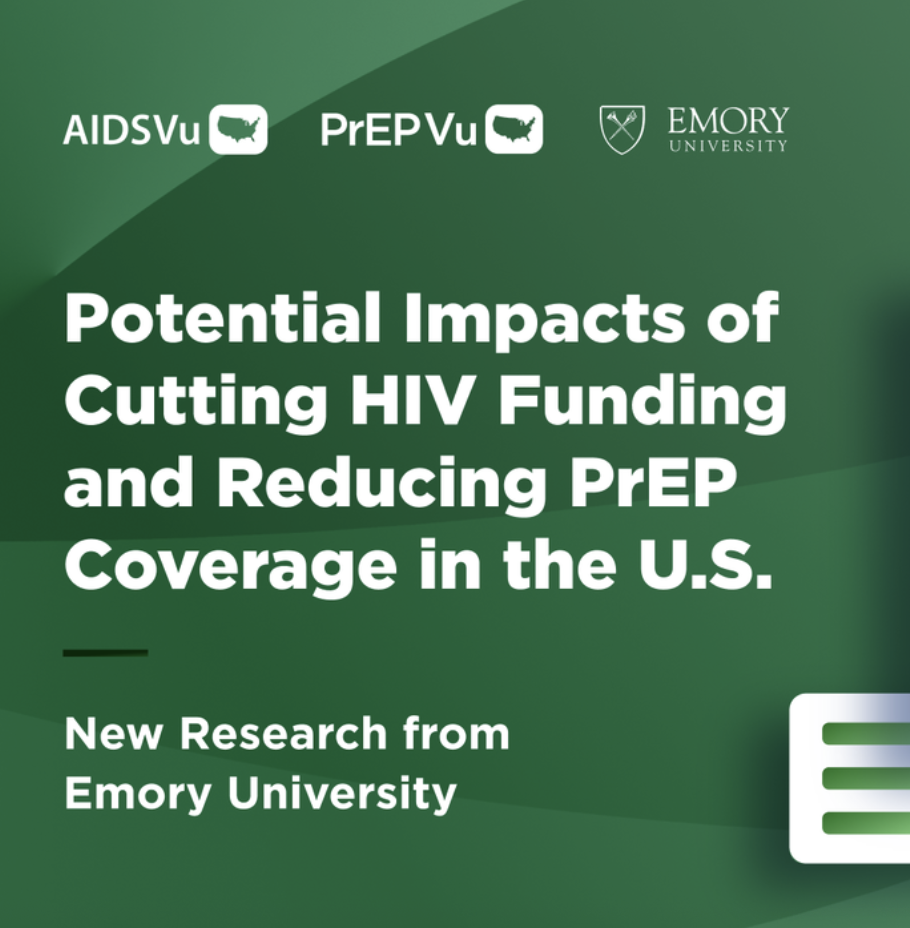AIDSVu is proud to announce the launch of its new HIV Impact Calculator, an interactive decision-support tool designed to help policymakers, public health professionals, advocates, and communities to model how changes in PrEP coverage and viral suppression rates can impact new HIV infections and overall healthcare costs.
This novel tool empowers users to simulate adjustments in key parameters — including PrEP coverage and viral suppression rates — and immediately see projected impacts on new HIV infections, lifetime medical costs, and progress toward HIV epidemic goals.
“We created this tool so that decision makers can easily see the consequences of funding decisions that result in increasing or decreasing HIV prevention and treatment services,” said Dr. Patrick Sullivan, Emory Professor and AIDSVu Principal Scientist. “We know that even a modest 3.3% annual drop in PrEP coverage over the next decade could lead to over 8,600 additional preventable HIV infections and $3.6 billion in additional medical costs. By visualizing the trade-offs, we hope to strengthen the case for sustained investment in HIV prevention, equitable access to PrEP, and efforts to maximize viral suppression.”
Some key features of the model:
- Dynamic slider controls allow users to increase or decrease levels of PrEP coverage or viral suppression, to estimate downstream effects on HIV incidence and additional healthcare spending over a decade.
- The model highlights how modest changes could result in thousands of additional HIV infections and billions in additional lifetime medical costs.
- Outputs are visual and shareable, facilitating discussions across agencies, advocacy groups, funding bodies, and communities.
- Users can explore “what-if” funding scenarios to support evidence-based decision-making and advocacy for sustained or increased investments in HIV prevention and care.
The HIV Impact Calculator is based on data published recently in JAMA Network Open highlighting the serious public health and economic consequences of rolling back access to HIV prevention services in the United States. Led by AIDSVu Principal Scientist, Dr. Patrick Sullivan of Emory University, the study finds that even modest reductions in the use of pre-exposure prophylaxis (PrEP) could result in thousands of avoidable HIV infections and billions in additional healthcare costs over the next decade. See more on the study here.
This Calculator launches amid pressing national efforts to accelerate progress toward the Ending the HIV Epidemic (EHE) goals, including reducing new diagnoses by 2030. Users of the model can explore the gap between current trajectories and EHE targets and see how increased prevention and care might help close that gap.
AIDSVu invites stakeholders across public health, policy, advocacy, academia, and community organizations to explore the tool, incorporate it into planning and budget discussions, and share insights with colleagues.
For access to the model and more information, visit https://aidsvu.org/hiv-impact-calculator/
More Groundbreaking PrEP Analyses from the AIDSVu Team
A study recently published in The Lancet HIV reveals that U.S. states with the highest pre-exposure prophylaxis (PrEP) coverage experienced a 38% drop in new HIV diagnoses from 2012 to 2022, while states with the lowest coverage saw a 27% increase. This is the first comprehensive, decade-long analysis to show the population-level impact of PrEP, a medication proven to prevent HIV infection. The findings underscore PrEP’s critical role in the federal Ending the HIV Epidemic initiative, demonstrating its effectiveness not only for individuals but also for reducing new infections and healthcare costs across entire communities.
More Data on PrEP
AIDSVu, a leading HIV/AIDS data platform dedicated to making HIV data widely available, easily accessible, and locally relevant, recently released 2024 PrEP use data showing that since 2012, the number of PrEP users in the U.S. has grown significantly. Between 2023 and 2024, PrEP use increased by 17% to 591,475 people—mirroring the rise seen from 2022 to 2023. These new data offer critical insight into the populations and areas of the country that are accessing PrEP, where gaps remain, and how trends have evolved over time. These data reveal both progress and persistent disparities, especially among Black, Hispanic/Latino, young, female, and Southern populations.
About AIDSVu
AIDSVu is presented by Emory University’s Rollins School of Public Health in partnership with Gilead Sciences, Inc. and the Center for AIDS Research at Emory University (CFAR). AIDSVu’s maps and data demonstrate the need for further investments in health equity including mitigating effects of various social determinants of health such as lack of health insurance and poverty. There is still much work to be done to achieve health equity, improve the quality of life for people living with HIV, and end the HIV epidemic in communities across the U.S.



